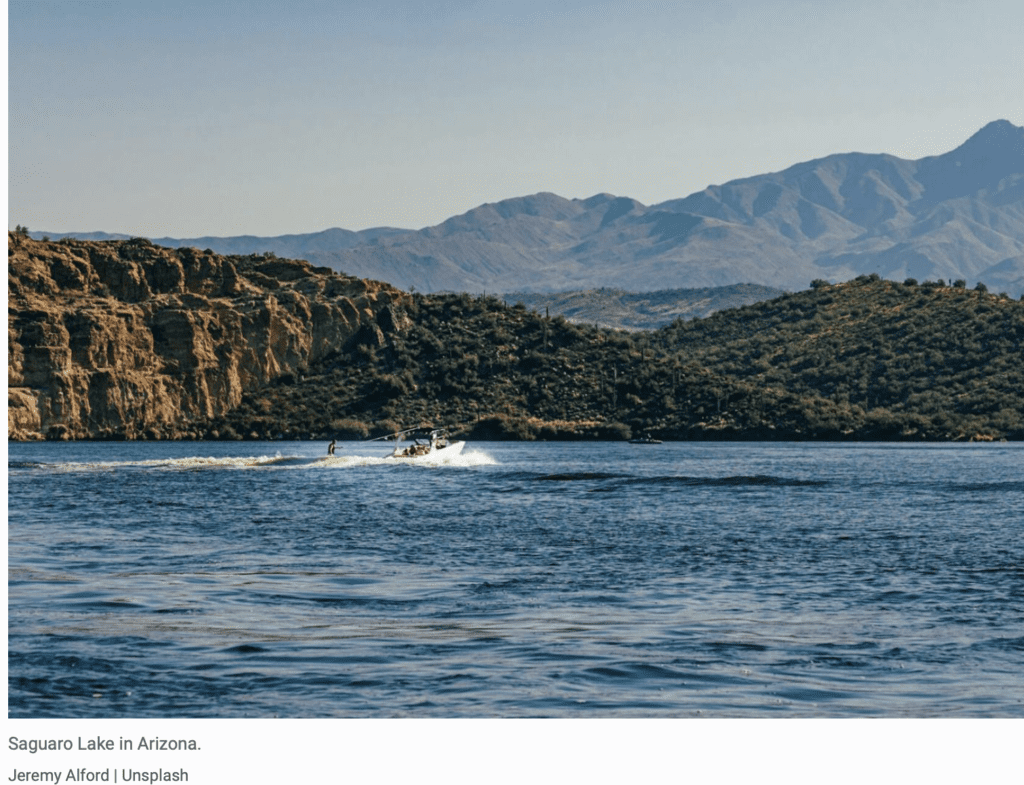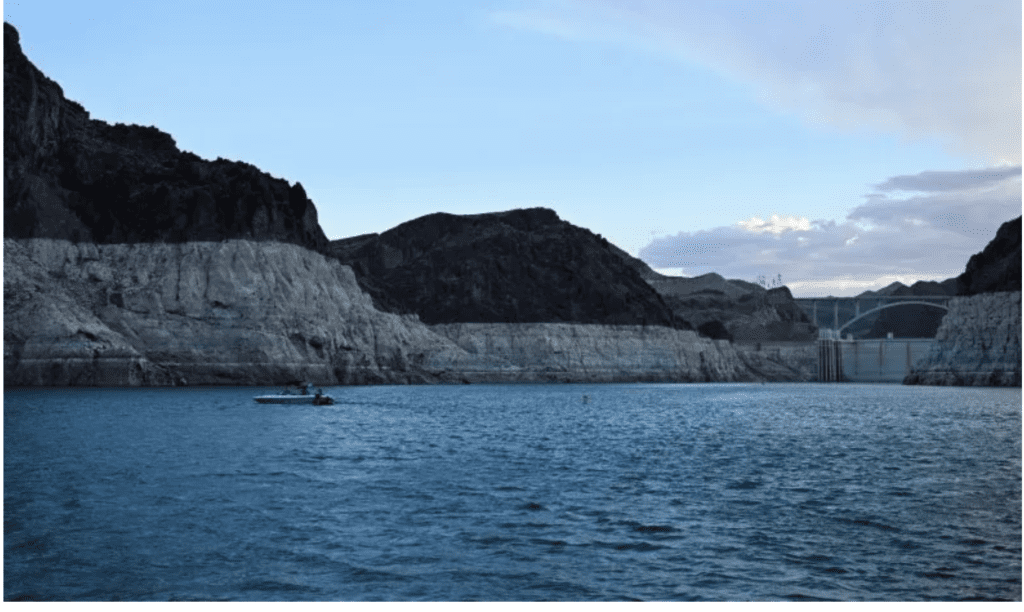Daniel Salzler No. 1279
EnviroInsight.org Five Items November 8, 2024
—————Feel Free To Pass This Along To Others——————
If your watershed is doing something you would like others to know about, or you know
of something others can benefit from, let me know and I will place it in this Information .
If you want to be removed from the distribution list, please let me know.
Please note that all meetings listed are open.
Enhance your viewing by downloading the pdf file to view photos, etc.
The attached is all about improving life in the watershed through knowledge.
If you want to be removed from the distribution list,
please let me know. Please note that all meetings listed are open.
Check our website at EnviroInsight.org
- River Recharge Project Funding Headed For Cochise County By Cameron Arcand | The Center Square Oct 30, 2024
The Coyote Wash Stormwater Management Project for the San Pedro River will have $1.5 million headed its way for the goal of finishing a “water recharge” effort.

The Coyote Wash Stormwater Management Project for the San Pedro River will have $1.5 million headed its way for the goal of finishing a “water recharge” effort.
“The San Pedro River is a one-of-a-kind desert river that plays a critical role in the habitat and ecosystem of the region,” Gov. Katie Hobbs said regarding the project’s grant. “This funding isn’t just dollars and cents, it’s a down payment on the state’s long-term commitment to securing Arizona’s water future. Important water conservation projects like this, alongside efforts to reform rural groundwater management will bring real solutions to build a sustainable future across the entire state.”
According to the Central Arizona Project, water recharge is a way to permit water for storage “underground now for recovery later during periods of reduced water supply.” The news release from the governor’s office says the project will specifically help with gathering more “precipitation and stormwater” in the river in order to maintain water supply in the desert, especially in a rural area like Cochise County that relies on water for agricultural purposes.
“We have to protect the Fort, as well as the people, as well as the river,” Cochise County Supervisor Ann English said, according to a news release. “This is the last mile and last dollar we needed to finish this project. We’ve been working on this project, as well as many other conservation projects for years because we knew it needed to happen. Our flood control department and our staff in the supervisor’s office all have been and are committed toward working toward a better water future for Cochise County.”
The announcement was made in southern Arizona on Monday with numerous environmental groups, as well as officials from different levels of government, including the federal Bureau of Land Management. Source: https://www.thecentersquare.com/arizona/article_3617ff70-96e7-11ef- 8561-0f6c6dc878a1.html
2. Water Certification Program

Hitting Surprise. Classes free for landscapers completing business in city.
Surprise is offering a new Qualified Water Efficient Landscaping certification program.
The QWEL program provides 20 hours of training and meets EPA WaterSense criteria as a professional certification program for landscape irrigation system audits.
Classes will be held from noon to 5 p.m. every Tuesday and Wednesday from Nov. 5 to 13 in the Water Education Center, 16126 N. Civic Center Plaza. The certification exam and audit will occur on Nov. 19.
For a limited time, the November class is being offered for free to landscapers doing business in Surprise, with only a $30 exam cost for certification.
The QWEL training presents an affordable, proactive and local approach to reducing landscape water demand and offers a hands-on irrigation audit.
Graduates of the program will have a greater knowledge of water-efficient and sustainable landscape practices, including water management and preservation of other valuable resources.
Plus, as an added benefit, businesses will receive a free listing on the QWEL and EPA WaterSense websites and use of the QWEL logo to promote their business.
To register for the November class, visit surpriseaz.gov/QWEL.
Topics covered during the training include:
- Sustainable landscaping
- Irrigation systems, scheduling and auditing
- Soils
- Irrigation maintenance and troubleshooting
- Landscape water
- Irrigation controllers
For questions, email [email protected].
3. Federal Court Ruling Could Have Big Implications For Colorado River. By Wyatt Myskow Inside Climate News Oct 28, 2024
A federal district court judge ruled this month that the U.S. Army Corps of Engineers violated the National Environmental Protection Act and the Clean Water Act when it approved expanding a Colorado reservoir. But a footnote to that decision is even more significant, experts and environmentalists say, with potentially far-reaching impacts on water management in the West and current negotiations to cut back use of the declining Colorado River.
Since 2002, Denver Water, which supplies 1.5 million people in the Denver metropolitan area, has been seeking to expand the Gross Reservoir. Construction that began in 2022 and is expected to be completed in 2027 will add 131 feet to the reservoir’s 340-foot dam, allowing it to triple its water storage capacity and hold an additional 72,000 acre-feet of water diverted from the declining Colorado River — enough water for about 150,000 homes.

The diversion of more water from the already over-appropriated Colorado River would threaten the wildlife that depend on the waterway and put the state at risk of violating the guidelines that regulate the river’s water supply, environmentalists have argued. Senior federal judge Christine Arguello agreed, noting that diverting more water from the Colorado River could result in forced reductions for the state. Any proposed new diversion must keep that risk, as well as reduced flows in the river due to climate change, in mind when pursuing new projects that would take more water out of the river, she wrote in her decision.
“The cracked foundation of the Colorado River’s management system all but demands skepticism over any proposal that will affect the hydrology of the Colorado River basin,” Arguello wrote in the footnote of her decision. She added that the Army Corps did not adequately consider the possibility that the collection of states dependent on the river’s water could make a “compact call” that could cut the amount of water to projects like Gross Reservoir. “It is perplexing to this Court that the Corps dismissed the possibility of a compact call in its analysis of a proposed water management project,” she wrote.
The Colorado River Basin is regulatorily split in two, with the Upper Basin consisting of Colorado, Wyoming, Utah and New Mexico, and the Lower Basin composed of Arizona, California and Nevada. Under the 1922 Colorado River Compact, which divided up the river’s resources and is the bedrock document of how it is governed, the Upper Basin is required to allow the Lower Basin states’ allocation of water to flow downstream and then gets what is left over for its own use. Every 10 years, the Upper Basin is required to deliver 75 million acre feet of water (an acre foot is 325,851 gallons) to the Lower Basin — 7.5 million every year. If it fails to send what’s required, the Upper Basin’s allocation could be cut in a compact call to ensure the Lower Basin, which has more senior water rights, gets what it is owed.
But the original compact measured the river’s flow during a series of wet years and overestimated what would actually be available in the river in the future. Today, years of overuse, combined with climate change, has left the Colorado River in dire straits, making the unthinkable — like a compact call — a possibility. The river that enabled the Southwest’s rapid growth and vital agricultural production is now declining in a megadrought, with its flows diminishing roughly 20% over the past two decades. The federal Bureau of Reclamation has reduced water allocations in recent years, paying users to conserve water, and the seven basin states, tribes and the federal government are in negotiations to cut even more. Meanwhile, cities and states are scrambling to find new water supplies.
In the Upper Basin, some water users are racing to build or expand dams, reservoirs and pipelines to use more Colorado River water while they can. Unlike the Lower Basin, the Upper Basin does not yet use all of the water it is technically entitled to, as the region doesn’t have reservoirs as large as Lake Mead or Lake Powell to store water, Colorado officials have told Inside Climate News previously. The states of the Upper Basin legally could use another 3 million acre feet, but experts and environmentalists say those are nothing more than paper water rights — meaning the water does not actually exist, given that the river is already over appropriated. Denver Water’s right to the water comes from a 1945 agreement, but the water has not yet been put to use. In Colorado, water providers can receive a conditional water right from the state’s water court, which allows them to potentially develop that supply in the future.
“For 15 years, we’ve been telling the exact same story about how it’s insane to be further draining the river at the top in the Upper Basin, and then paying people in the Lower Basin — farmers, principally — to use less water,” said Gary Wockner, founder of Save the Colorado, the environmental group that’s led the push against the Gross Reservoir expansion as well as other diversion attempts along the river. “It’s a shell game and here we finally have a judge pointing out that taking more water out on the top of the basin could eventually trigger a compact call.”
The court’s decision does not force Denver Water to stop construction, but orders the utility to meet with plaintiffs to agree on remedies for the project’s environmental impacts and notes that the groups have a right to relief from any damage caused by the construction.
The court’s decision found the U.S. Army Corps of Engineers had failed to analyze the full impact climate change could have on the project and water supplies in the region, or consider a range of alternatives for the project that might be more environmentally friendly or better account for future needs.
“Despite acknowledging that future climate conditions might neuter the Gross Dam’s value as a water storage solution, the Corps expressly declined to attempt to quantify the impacts of climate change—or even provide an educated guess, for purposes of discussion,” Arguello wrote. Source: https://azdailysun.com/federal-court-ruling-could-have-big-implications-for-colorado-river/article_27dc7298-9556-11ef-b668-0790fa56e28c.html
4. How Lake Mead’s Water Levels Now Compare To Critically Low Levels. Published Oct 22, 2024 at 3:04 PM EDT Updated Oct 22, 2024 at 3:09 PM EDT.
Lake Mead’s water levels are 17 feet higher than they were when the reservoir battled critically low levels in the fall of 2022, fueling hope that the incoming water year will further help the reservoir.
After years of drought, Lake Mead, which is in Nevada and Arizona, plunged to critically low levels in the summer of 2022. Above-average precipitation and snowmelt that winter helped remedy the levels, which continued to improve throughout 2023. Now, roughly two years later, Lake Mead looks to be in a better position for the new water year, which began October 1.
On Tuesday,October 2, 2024, Lake Mead’s water levels were at 1,063 feet, roughly 17 feet higher than this time in 2022 and 3 feet lower than this time in 2023. The lake’s levels have remained mostly steady since late June, after the lake experienced a steady decline that brought its levels down from a high point of 1,076 feet in March.
By comparison, Lake Mead’s water levels began dropping in March 2022 and continued to plunge until they reached a low of 1,040 feet in late July. The lake slowly improved that winter before experiencing a steep increase in water levels from late April 2023 through early September of that year.

Colby Pellegrino, the deputy general manager for the Southern Nevada Water Authority, told Newsweek that the biggest changes to Lake Mead’s water levels are caused by Lake Powell water releases upstream. Lake Powell is greatly affected by the annual weather, Pellegrino said, which in turn affects Lake Mead.
Going into the new water year, Pellegrino feels hopeful about Lake Mead and the Colorado River.
“I think holistically the river, and in particular the lower basin, is in a much more secure position than we were in 2022,” Pellegrino said. She added that she expects the coming water year to be a “pretty good year” for Lake Mead.
Based on past data, Lake Mead water levels typically begin improving at the beginning of the water year, which runs through September 30. Levels generally continue improving through the early spring, when snowmelt concludes, and then begin to fall as water use picks up and dry weather returns during the summer months.
Last January, Lake Mead’s water levels improved at a rate not seen since 2019, but the lake still has a long way to go before it’s recovered completely, as full pool is measured at 1,229 feet. Source: https://www.newsweek.com/how-lake-mead-water-levels-compare-critically-low-1973055
Copyright: 2024 EniroInight.org
